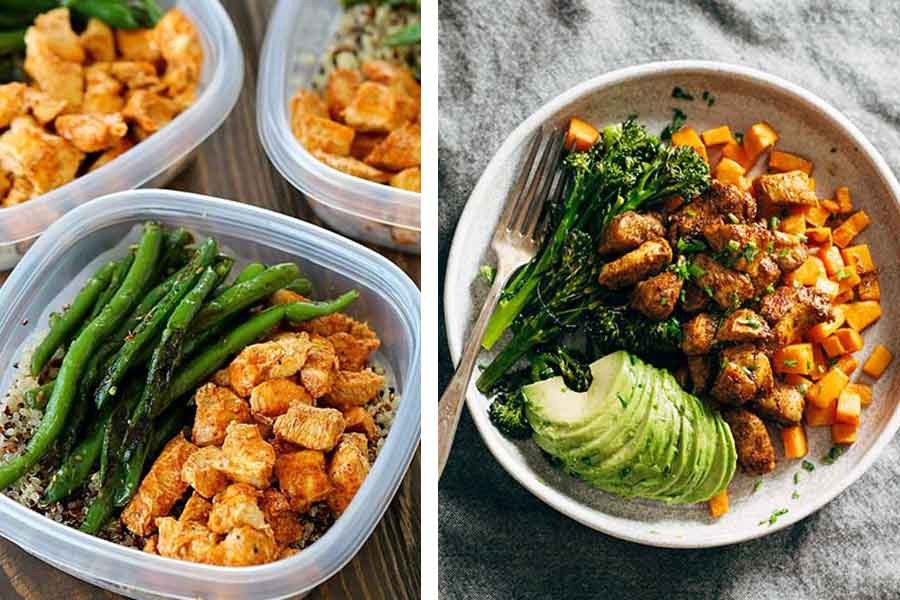Taking a healthy dinner is not the way to achieve/maintain a healthy weight. Rather it is part of a holistic approach.
None can gain benefit from the following recommendations if he/she maintains these only in dinner while binging all day on fast food. Instead, many of such recommended dinner items can be included in other meals for weight management.
For dinner or any other meal of the day, it is advisable to eat minimally processed foods, namely whole grains, a variety of vegetables, whole fruits (excluding fruit juice), and protein, nuts, seeds, beans and plant oils (vegetable oils).
Whole grains include brown rice (not the white one), whole wheat bread (again, not white bread), barley, oats, and foods made with them. These are always good weight loss foods.
A green salad mixed with various vegetables/fruits (potatoes not included) should be one of the first courses in dinner. Such a meal can cut overall calorie intake by 12 per cent, and the dietary fibres packed in the salad may provide the much-needed boost for weight reduction.
Contrary to what some may believe, meat is not completely banned from a healthy diet. It is an important source of protein. The trick is to choose the right amount and type. Red meat intake should be limited as much as possible.
The best meat is chicken. Fish, tofu, beans etc. are also good sources of protein. Proteins at dinner will give the stomach a feeling of fullness longer than carbs and fats. This is important to avoid midnight snacking, which is one cause of weight gain.
Sweet potatoes should also be at the dinner table. They are rich sources of nutrients like vitamin A, C, potassium, and fibre - all necessary for a healthy diet and weight.
Another thing that should be kept in mind is drastically stopping sugary foods that may do more harm than good.
Dr. Pietro Cottone from Boston University explained that such a step releases a hormone called corticotropin-releasing factor (CRF) which may lower motivation to eat nutritious food, increasing the likelihood of consuming more junk foods.
Instead of adopting such an extreme approach, it is better to cut down the intake of sugary foods gradually and keep it to the minimum.
But how much of what kind of food should be on our plate? We can refer to the ‘Health Eating Plate’ model proposed by the Harvard School of Public Health. It stresses on variety and proper portions of each nutrient.
According to the model, 1/4th of our plate should be whole grains. Fish, poultry, beans, nuts or other sources of protein should constitute 1/4th. The rest should be fruits and vegetables, discounting potatoes.
Oil is a staple for cooking. So, for preparing dinner or any other meal, healthy oils like canola, soy, corn, sunflower, olive should be chosen.
Partially hydrogenated oils containing trans-fats are avoidable as those are unhealthy. It should be remembered that branding an oil ‘low-fat’ doesn’t automatically make it a healthy choice.
Dr Imtiaz Ahmed completed his MBBS from Dhaka Medical College.


